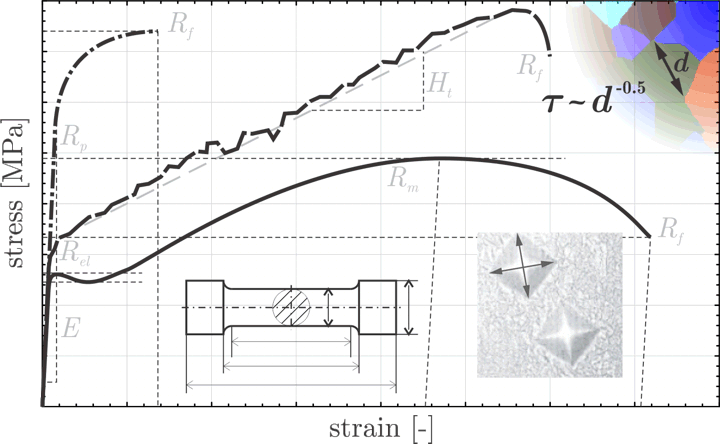Mechanics of Materials
At the intersection of mechanics and materials science, we investigate why materials behave the way they do. The performance of materials as we perceive it with the naked eye is only the macroscopic manifestation of a myriad of complex mechanisms that occur across various length and time scales much smaller than those we experience in our everyday life. For technological applications we need materials that meet certain requirements such as a target weight, stiffness and strength. Rather than using look-up tables of existing materials, we aim for a complete understanding of the underlying nano- and microscale mechanisms that endow materials with their effective engineering properties. This, in turn, requires a thorough investigation of the mechanics and physics of materials across all relevant scales involved, and it paves the road for ultimately controlling and optimizing material properties by demand.
In our lab, we focus both on general techniques for modeling and examining material behavior and on investigations of specific materials and their mechanics. For example, we develop new phase field techniques for the simulation of ferroelectric ceramics. Ferroelectrics are an important class of materials which couple mechanical with electrical signals, e.g., through the (inverse) Piezo effect. When loaded mechanically, they produce a voltage; when a voltage is applied, they deform. This behavior is exploitet in actuators and sensors. While the linear behavior is well understood, the general nonlinear behavior under large applied fields is far from fully understood. Our research aims at new theoretical-numerical formulations to predict the material behavior as well as to investigate specifics such as the influence of compositions, defects, and temperature on the material behavior of lead-based and lead-free ferroelectric ceramics. As a further example, we study the mechanics of magnesium alloys. Magnesium, being about 50% lighter than aluminum, has tremedous potential as a lightweight structural metal - if only we had a complete understanding of its mechanical behavior and the right processing routes of its alloys. We develop advanced crystal plasticity and phase field techniques for the study of magnesium alloys with special attention to the mechanisms during processing. This includes the temperature- and rate-dependent deformation response, recrystallization during severe plastic deformation, and precipitation in alloys. Finally, 3D-printed polymeric materials and composite materials with phase-transforming constituents are further examples of interest in our lab. In addition to theory and simulations, we also perform experiments to validate our models and to probe the material behavior in the lab.
